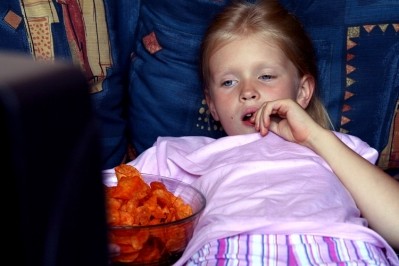Kids most exposed to junk food advertising in France, finds public health agency

The world is experiencing an obesity epidemic. Since 1975, the prevalence of obesity worldwide has tripled, and according to the World Health Organization (WHO), a key cause of rising obesity rates is consumption of excess energy from food – particularly from products regarded high in fat and energy-dense.
Junk food, which is generally high in either fat, salt or sugar (HFSS) fits into this category. And the marketing of such products is thought to contribute to obesogenic environments.
As overweight youths are more prone to becoming overweight or obese adults, it is thought that limiting exposure to junk food advertising at a young age could help combat obesity in adult populations.
Prior to implementing such regulations, children’s exposure to HFSS advertising should be quantified, which is what France’s public health agency, Santé Publique France, has set out to do.
The study
The study (available here in French) gathered data on the advertising of HFSS foods in France in 2012, 2015 and 2018. Exposure to television – and particular time slots – was also researched for three different age groups: 4-12 year olds, 13-17 year olds, and 18 years and over.
The nutritional profile of food products was calculated according to both the WHO’s guidelines and Nutri-Score – a scheme that ranks food with a corresponding colour code: from dark green (A) for the ‘healthiest’ foods to dark red (F) for the ‘least healthy’.
And finally, the health agency collated advertising spend across all media, and more specifically, for the top 20 advertisers in food.
McDonald’s, Ferrero, and Nestlé lead the charge
In 2018, advertising spend for food, drink and catering businesses across all media came to €1.1bn, accounting for 9.3% of all estimated spend in advertising for that year.
Of that €1.1bn, 60% was attributed to television and 20% to internet. While television remains the advertising platform of choice for food and drink companies, it has decreased since 2015 (67%) and 2012 (63%), which can be largely attributed to an increase in internet spend.
Concerning individual company spend, fast food chain McDonald’s was found to have invested the most in food advertising in 2018 (€242,627), followed by Nutella manufacturer Ferrero (€230,102), Swiss food giant Nestlé (€179,383), and confectionery company Mondelēz International (€111,629).
Together with Lactalis Group, Orangina, Suntory France, and Coca-Cola, these seven advertisers made up one-third (31%) of total advertising spend.
Other food and drink advertisers of note in 2018 include Unilever (€62,160), PepsiCo (€54,812) and France’s own Danone (€44,298).
Fast food, chocolate, and sugary drinks
Concerning food categories, in 2018 three food sectors attracted the largest amount of advertising investment: fast food, chocolate, and sugary drinks. These three categories attracted one-third of total advertising spend for that year.
The study also separated advertising spend according to nutritional profile. Advertising investment across all media for food products with a Nutri-Score ranking of D and E – meaning foods of lower nutritional quality – represented close to half (48%) of total food advertising spend in for that year.
Given these data sets, researchers were able, for the first time in France, to measure exposure to advertisements of HFSS products by age group.
Advertisements seen on television by children and adolescents, and to a lesser extent by adults, were found to predominantly promote items with a Nutri-Score ranking of D and E.
In 2018, for example, ads for Nutri-Score D and E products accounted for 53.3% of all food ads seen by children, 52.2% seen by teens, and 50.8% seen by adults.
Regulatory implications?
Junk food advertising regulations are laxer in France compared to some other European countries.
In the UK, for example, food and drink companies are banned from promoting HFSS products on children’s television, or on any media channel, with an audience of more than 25% under-16s.
In Ireland, HFSS products cannot be advertised during TV and radio programmes where over 50% of the audience are under-18s. And in Sweden, TV advertising of HFSS products is banned during programmes appealing to children under 12.
In France, 2003 saw regulations enforced requiring food and drink firms to include one of four health messages on all broadcast and print adverts for their products. To avoid being penalised, companies must select from: ‘avoid snacking between meals’, ‘avoid eating too much salt, sugar or fat’, ‘take regular exercise’, and ‘eat at least five portions of fruit and vegetables every day’.
Yet in 2018, the nation failed to bring in regulations banning junk food advertising targeting children. The proposed ban, had it been accepted by ministers, would have prohibited all forms of advertising across TV, radio, audio-visual and electric channels to children under 16 years.
Now, Santé Publique France’s latest findings could potentially be used to push forward a similar bill. “These results are in favour of restricting food marketing for products of low nutritional quality, especially on television, at times when the greatest number of children and teenagers watch television,” noted the health agency.
“In addition, the increase in the time spent on the internet by children and adolescents suggests a much more massive exposure to advertisements for [HFSS foods], without it being possible to date to measure it, but for which the supervision seems also quite necessary.”








